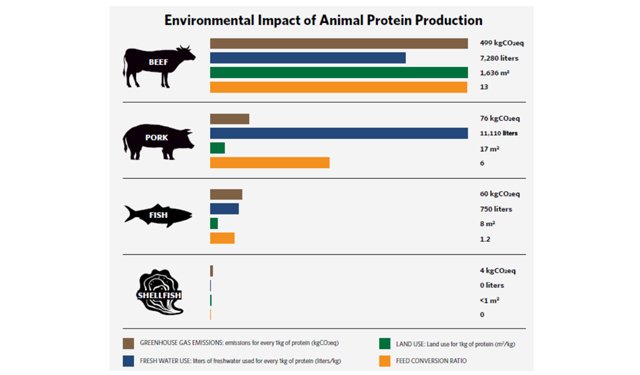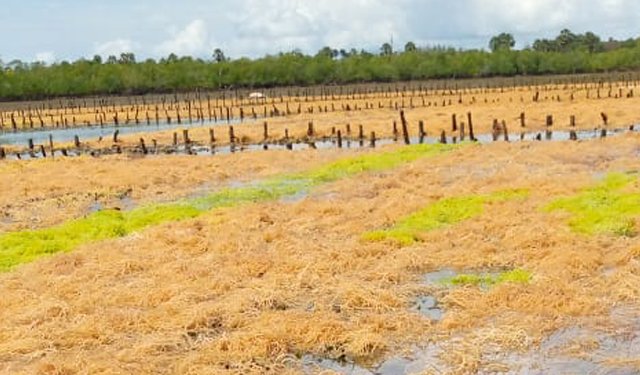Climate action is gaining momentum. What can be done through the aquaculture sector? – In recent months, we have witnessed stunning progress on climate action—and terrifying signs of the dangers we’ve unleashed.
The US finally stepped up as a leader in climate action, enforcing a trio of major laws that could add up to the largest federal investment ever into climate and clean-energy technologies. The nation will leverage hundreds of billions of dollars in federal grants, loans, procurements, and tax credits to turbocharge wind and solar development, electric-vehicles sales, battery manufacturing, and emerging means of capturing, sucking up, and storing away carbon dioxide.
Meanwhile, renewables, electric vehicles, and meat alternatives are now competitive mainstream options that are seizing market share. The cost of building large solar farms plummeted more than 80% in the last decade.
If we assume every country follows through on its latest commitments under the Paris climate deal, the world will be on track for about 2.4 ˚C of warming over the levels of the late 1800s.
That’s too much, but few scientists are still warning that we’re barreling toward a 4 ˚C or hotter planet this century – it’s mean disaster.
The world’s accelerating progress on climate change proves we can do more. The growing dangers show we must.
Some could be done through sustainable aquaculture, here are some examples:
Boosts aquaculture production
For this reason, let all of us think big, big like the 71% of our planet’s surface: we must think smart and seize all the opportunities that our ocean provides for the future generations and all of us.
A reimagining of how and where we grow our food can make all the difference for our environment and for our coastal communities including the future also of fishing.
Right now, it has been proven that growing the majority of our food through agriculture requires land and a huge amount of water in order to produce at its best, but as we all may already know, almost all of the world’s fertile land is already in use and water is nowadays a precious resource.
Food production is responsible for one-quarter of the world’s greenhouse gas emissions.
One-quarter of the world’s greenhouse gas emissions results from food and agriculture.
For all the reasons mentioned above, aquaculture is a good alternative for food production and to reduce the environmental impact.

Source: GHG, FW use, and LU data: Ritchie 2020; FW use for marine fish data: Pahlow et al. 2015; GHG for bivalves: MacLeod et al. 2020. FCR data: Sharpless and Evans 2013; Note: FW use data for marine fish was taken from Pahlow et al. 2015 as underlying data in Ritchie 2020 and was inclusive of freshwater aquaculture ponds. Freshwater usage varies by species and feed; Japanese Amberjack was used here.
Upscale seaweed production and carbon sequestration
Seaweed cultivation will make a significant contribution to the climate because it is an efficient method for capturing carbon and has great upscaling potential.
Seaweed aquaculture, the fastest-growing component of global aquaculture production, offers a slate of opportunities to mitigate, and adapt to climate change. Seaweed farms attracts and converts carbon through photosynthesis; release carbon that maybe buried in sediments, therefore acting as a CO2 sink.
The crop can also be used, in total or in part, for biofuel production, with a potential CO2 mitigation capacity, in terms of avoided emissions from fossil fuels, of about 1,500 tons CO2 km−2 year−1.
Seaweed aquaculture can also help reduce the emissions from agriculture, by improving soil quality substituting synthetic fertilizer and when included in cattle fed, lowering methane emissions from cattle.
Seaweed aquaculture contributes to climate change adaptation by damping wave energy and protecting shorelines, elevating pH and supplying oxygen to the waters, thereby locally reducing the effects of ocean acidification and de-oxygenation.

Support aquaculture through green energy
The rapid growth of aquaculture production has required a huge power demand, which is estimated to be about 40% of the total energy cost.
The use of renewable energy in aquaculture reduces the production costs and increases the sustainability.
Solar energy is one of the cleanest energy sources and is touted as a potential renewable energy source for the world with benefits such as reducing CO2 emissions, reversing global warming by being eco-friendly, and bringing innovation to sustainable aquaculture and potential cost-efficiency for manufacturing.
Aquaculture systems need pumps and aerator to oxygenate, to pump and purify or filter the water. Solar generated electric power is known as photovoltaic.
Solar panels are installed above the pond or the cage, generating the electricity and store in the batteries. Afterwards, this clean energy is used for water exchange, aeration, lighting, automatic feeding, etc..
Advantages:
• It is renewable and free;
• It is 100% eco – friendly;
• Availability of energy in remote areas not served by the electricity grid;
• More energy at cheaper cost.
Disadvantages:
• Need high initial investment;
• Need periodical maintenance and replacement for the bacteries;
• No production of solar energy during the night.
Climate action is gaining momentum. What can be done through the aquaculture sector?








